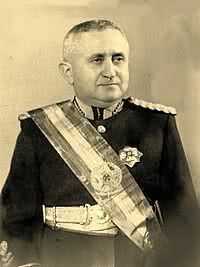The Visigoths are one of the offshoots of the Goth peoples.
Their name means “Goths of the West”, to differentiate themselves from the Ostrogoths or Goths of the East.
Its origin is on the shores of the Black Sea, in present-day Romania, constituting one of several Germanic (or barbarian) peoples who occupied the territory of the Western Roman Empire.
Around the 2nd and 3rd centuries, the Goths left their homeland and moved towards Rome, as one of the federated peoples of the Empire. The Visigoths had already assimilated several Roman customs by living with the legions stationed on the Danube River.
They pass through the Italian Peninsula, head to the south of France and settle in the Iberian Peninsula. In the south of France, they arrived in the city of Toulouse in 418 and made it the capital of the kingdom, until 507, when they were expelled by Clovis I.
Meanwhile, the Visigoths entered Hispania (Roman Spain) as allies of the Romans and helped them to maintain the Iberian Peninsula from the 6th century onwards. Two Goth peoples, Swabians and Visigoths, manage to establish independent kingdoms.
With the defeat and expulsion of the Visigoths in southern France, the Visigoths are concentrated in the Iberian Peninsula. Later, King Leovigildo (572-586) submits the Swabians, creates a kingdom whose capital will be Toledo, in Spain.
Visigothic Kingdom
The Visigothic kingdom lasted from 420 to 711 and occupied practically the entire territory of Spain and southeastern France.
The Visigoth monarchy was elective and the sovereign was chosen by an assembly of nobles and members of the clergy. The king was the supreme judge, chief of the army and legislator, and he ruled with the support of the King's Council, which was composed of nobles at the top of the hierarchy.
However, as it is elective and not hereditary, power struggles were frequent.
To have an idea, of thirty-four Visigoth kings, ten died by their relatives, nine by courtiers and only fifteen died of natural death.

Religion
Initially, the Visigoths were polytheists, but from the year 240 onwards, they converted to Aryan Christianity (Aryanism) preached by Bishop Ulfilas.
Arianism asserted that Christ was not of the same nature as God and was considered a heresy from the Council of Nicaea in 325. From then on, these two branches of Christianity will face each other on the battlefield.
The religious wars in the Visigoth kingdom would only end with the conversion of King Recaredo I. This confirmed the resolution of the III Council of Toledo, in 589, which banned the Arian doctrine. In this way, he manages to unify the religion in Hispania, becoming a guide for the Church and at the same time he could count on its help.
Visigoth economics
The economic activities of the Visigoths centered on the cultivation of cereals and it was they who brought the planting of spinach, hops and artichokes to the Iberian Peninsula.
Following the organization model of the late Roman Empire, cities lost importance and owners began to live in large “villages”.
These consisted of houses, churches and cultivation areas, which were privately administered and had their own army.
Initially, the Visigoths had slaves, but gradually replaced them by colonists.
We also have these texts on the same subject:
- Germanic Peoples
- barbarian peoples
- Formation of Portugal
Bibliographic references
QUERALT, Maria Pilar & PIQUER, Mar - Gran Libro de los Reyes de España. Servilibro Editions. 2006.
CORTÁZAR, Fernando García de - & VESGA, José Manuel Gozález: Brief History of Spain, Alianza Editorial: Madrid. 1995.
New history of Spain. Chapter 3. The Visigoth Kingdom. Consulted on 09.09.2020.



